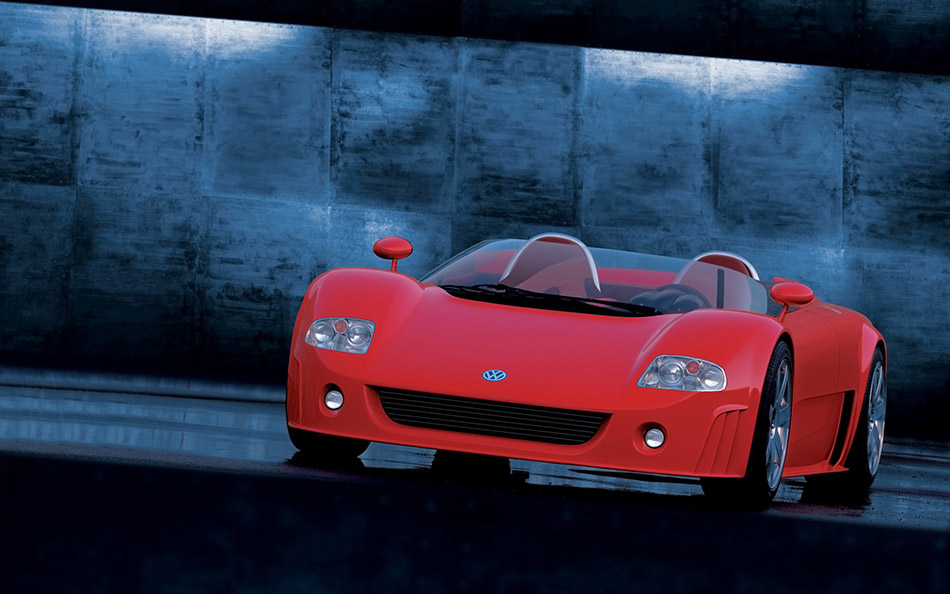In the future, all Volkswagens in the upper and luxury classes will be equipped with the high-torque W engines. They are characterised by exceptionally low levels of vibration and the best possible acoustic qualities. They are, depending on the model in question, used as standard- in the W12 Coupé for example - or as an option. The Volkswagen brand will launch them as an eight-cylinder, as can already be seen in the Passat W8, and as a twelve-cylinder version with varying levels of output and set-ups. A 16-cylinder version has also been developed on this basis within the Volkswagen Group. It will be used as of 2003 in the Bugatti EB 16·4 Veyron, which was shown in its most current version last September at the Frankfurt Motor Show.
The technology of the twelve cylinder engine integrated in the design study W12 Coupé: with a length of 513 millimetres, a height of 715 millimetres and a width of 710 millimetres, the engine is particularly compact. The capacity of the W12, which weighs just 239 kilograms, is 5,998 cm³. The engine, which is located between the passenger compartment and the rear axle, has an extraordinarily torsionally rigid aluminium crankcase with wear-resistant cylinder sleeves. A further indication of the systematic light-weight construction approach can be seen in the valve covers and timing chain covers made of magnesium.

The basic layout of the W12 engine is made up of two very thin V6 four-valve modules which are configured at an angle of 72 degrees with a joint crankshaft with seven main bearings to make up a V-V arrangement, i.e. a "W". The cylinder angle is just 15 degrees Within the two V6 banks. This makes the construction, which is very compact in comparison to V12 engines, possible.
All other construction details of the W12 engine, which has a compression ratio of 12:1, are also indications of an extremely high-tech assembly: the spark plugs are positioned centrally in the pent-roof combustion chamber, making optimal combustion possible; the same applies for the flow-optimised intake ports. A double-flow magnesium variable intake manifold supports the particularly dynamic torque curve. The variable intake and exhaust valve timing has a decisive influence on power development: the inlet camshafts can be continually adjusted through 52 degrees and the corresponding value for the exhaust camshaft is 22 degrees.
It is no wonder, when considering this technology, that a high priority was given to the performance of all materials in the development phase of the W12 engine. For example, Volkswagen is only using engine oils from the Shell Helix family for the W12 Coupé.
The emissions levels have been perfectly regulated. The W12 Coupé has been developed so that it will meet the requirements of the stringent EU-4 norm due to its four starter catalysts and two catalysts in the standard production version.
Source: Volkswagen















